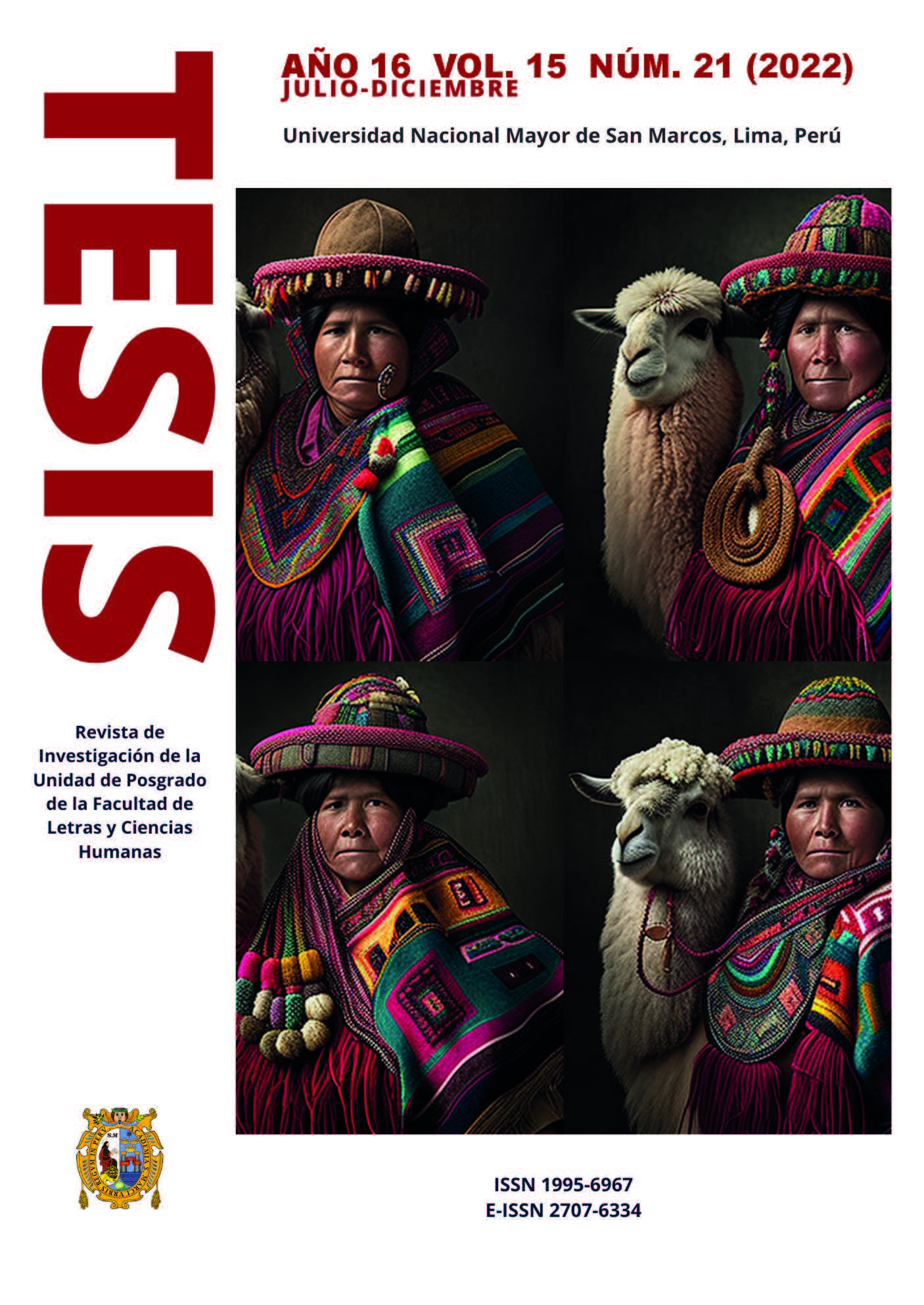Análisis semántico-cognitivo de la polisemia del morfema apreciativo-aumentativo -azo1 en español
DOI:
https://doi.org/10.15381/tesis.v15i21.25219Palabras clave:
polisemia, -azo, red radial, prototipo, lingüística cognitivaResumen
En este estudio se aborda el fenómeno de la polisemia del morfema apreciativo -azo en español desde una perspectiva semántico-cognitiva. El objetivo principal consiste en explicar la forma en que se organizan los múltiples significados detectables en los usos de formas léxicas derivadas a través de este sufijo. Reconocemos que esta unidad morfológica presenta un conjunto de categorías motivadas que conforman una red polisémica organizada mediante un punto semántico central o punto de referencia cognitivo cuya naturaleza está definida por la experimentación de la realidad física, que orienta metafóricamente los otros significados posibles de la red radial. Estos hallazgos revelan que los sentidos posibles son el producto de la determinación de una categoría prototípica vinculada con el tamaño, la cual amplía la red mediante un mecanismo de conceptualización metafórica.
Referencias
Behrens, H. (2009). Usage-based and emergentist aproaches to language acquisition. Linguistics, 47(2), 383-411. https://doi.org/10.1515/LING.2009.014
Berwick, R. C. y Chomsky, N. (2016). ¿Por qué solo nosotros? Evolución y lenguaje. Editorial Kairós.
Brenda, M. (2014). The cognitive perspective on the polysemy of the English spatial preposition over. Cambridge Scholars Publishing.
Chomsky, N. (2017). ¿Qué clase de criaturas somos? Ariel.
Chomsky, N. (2006). Language and mind. Cambridge University Press.
Dirven, R. (2005). Major strands in Cognitive Linguistics. En F. J. Ruiz de Mendoza Ibáñez y M. S. Peña Cervel (eds.), Cognitive linguistics: internal dynamics and interdisciplinary interaction (pp. 17-68). Mouton de Gruyter.
Evans, V. y Melanie G. (2006). Cognitive Linguistics. An introduction. Edinburgh University Press.
Glynn, D. (2014). Polysemy and synonymy. Cognitive theory and corpus method. En D. Glynn y J. A. Robninson (eds.), Corpus methods for Semantics: Quantitative studies in polysemy and synonymy (pp. 7-38). John Benjamins Publishing Company.
Hauser, M. D., Chomsky, N. y Fitch, T. (2002). The faculty of language: what is it, who has it, and how did it evolve. Science, 268, 1569-1579.
Ibarretxe-Antuñano, I. y Valenzuela, J. (2012). Lingüística Cognitiva. Anthropos Editorial.
Lewandowska-Tomaszczyk, B. (2007). Polysemy, prototypes, and radial categories. En D. Geeraerts y H. Cuyckens (eds.), The Oxford Handbook of Cognitive Linguistics, (pp. 139-169). Oxford University Press.
Moreno M., J. A. (2016). La lingüística cognitiva: una aproximación al abordaje del fenómeno cognitivo integrado. Análisis. Revista Colombiana de Humanidades, 48(88), 41-51.
Orešković, M., Essert, M. y Kurtović B., I. (2017). Encyclopedic knowledge as a semantic resource. En I. Atanassova, W. Zaghouani, B. Kragić, K. Aas, H. Stančić y S. Seljan (eds.), INFuture2017: Integrating ICT in Society (pp. 151- 160). University of Zagreb.
Piattelli-Palmarini, M., Uriagereka, J. y Salaburu, P. (2009). Of minds of language. A dialogue with Noam Chomsky in the Basque country. Oxford University Press.
Rosch, E. (1975). Cognitive Reference Points. Cognitive Psychology, 7, 532-547. https://doi.org/10.1016/0010-0285(75)90021-3
Rohrer, T. (2007). Embodiment and experientialism. En D. Geeraerts y H. Cuyckens (eds.), The Oxford Handbook of Cognitive Linguistics (pp. 25-47). Oxford University Press.
Terejko, P. (2016). Cognitive grammar as a manifestation of the pragmatic turn in Linguistics. Acta Humana, 7, 33-45. https://doi.org/10.17951/ah.2016.7.33
Valenzuela, J., Ibarretxe-Antuñano, I. y Hilferty, J. (2012). La semántica cognitiva. En I. Ibarretxe-Antuñano y J. Valenzuela (dirs.), Lingüística cognitiva (pp. 41-68). Anthropos.
Descargas
Publicado
Número
Sección
Licencia
Derechos de autor 2023 Magali Cleofé Villegas Paz

Esta obra está bajo una licencia internacional Creative Commons Atribución 4.0.
LOS AUTORES RETIENEN SUS DERECHOS:
a. Los autores retienen sus derechos de marca y patente, y también sobre cualquier proceso o procedimiento descrito en el artículo.
b. Los autores retienen el derecho de compartir, copiar, distribuir, ejecutar y comunicar públicamente el artículo publicado en la revista Tesis (Lima) (por ejemplo, colocarlo en un repositorio institucional o publicarlo en un libro), con un reconocimiento de su publicación inicial en la revista Tesis (Lima).
c. Los autores retienen el derecho a hacer una posterior publicación de su trabajo, de utilizar el artículo o cualquier parte de aquel (por ejemplo: una compilación de sus trabajos, notas para conferencias, tesis, o para un libro), siempre que indiquen la fuente de publicación (autores del trabajo, revista, volumen, numero y fecha).














